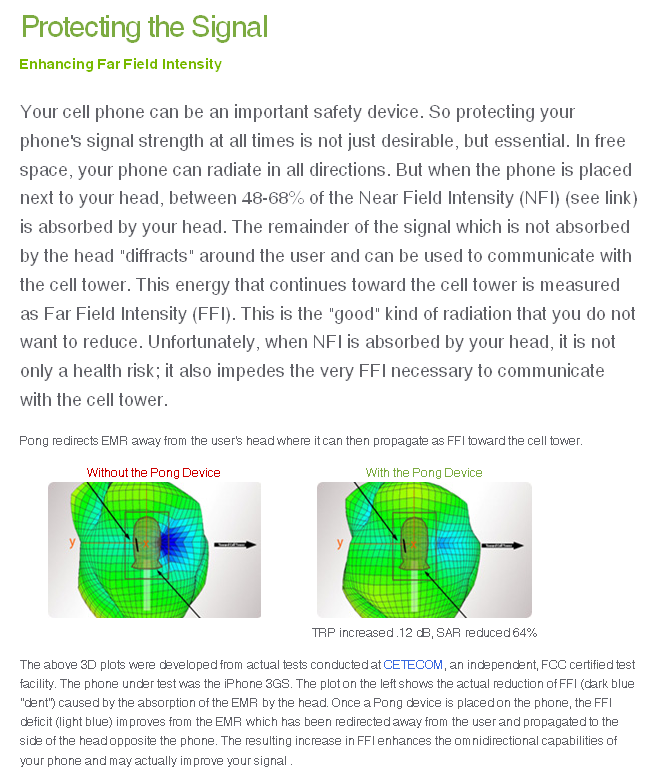Reducing SAR - is it true?
I came across the so called ' pong' http://www.pongresearch.com/protecting-signal.html
I'm kind of curious and wonder how much of what they claim is actually true.
I'm kind of curious and wonder how much of what they claim is actually true.




Comments
All modern cell phones, PDAs, laptops and other electronic devices that transmit RF, and even the cell phones GPS receiver, use 2 basic antenna designs called #1. Planar F or #2. Planar Inverted F antenna.
The main reason that these antennas are being used is because these antenna designs inherently direct the RF away from the user thereby reducing the radiation that would normally be directed towards the uses head if an omnidirectional antenna were used.
Basically the antennas that are being used these days in most if not all designs were chosen to meet or more so exceed the FCC SAR requirements so such a device is not really needed.
According to TNYT "...Pong Research, based in Los Angeles and Middleburg, Va., manufactures cellphone cases with a patented pattern consisting of a metallic coupling loop and horizontal metallic stripes alternated with insulating materials....".
Some interesting reviews can be found here:
http://www.cnet.com/8301-17918_1-20105781-85/a-cell-phone-case-for-reducing-cell-phone-radiation/
http://www.wired.com/gadgetlab/2011/12/pong-ipad-case-investigation/all/1
http://www.engadget.com/2010/11/19/casemates-iphone-4-bounce-case-protects-your-noodle-from-inevit/
http://gadgetwise.blogs.nytimes.com/2010/06/01/anti-radiation-products-with-some-science-in-them/#more-29661
http://forums.hardwarezone.com.sg/mass-order-corner-251/%5Bmo%5D-pong-patented-phone-case-protects-you-3567176.html
The antenna was a slightly different design, as I remember, and it was placed in a position on the case where even though it met the SAR requirements towards the rear (towards users head) it was placed in such a bad location that the antenna was detuned by the users hand and the power dropped more than the design specs.
Their fix was to use an aftermarket case, which wasn't metallic either, so the fixer case only produced a separation distance from the user to the I-phone problem area.
In essence they made the case thicker with the separator piece but this piece still needed to be non metallic, as I remember, otherwise it would also detune the antenna.